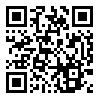BibTeX | RIS | EndNote | Medlars | ProCite | Reference Manager | RefWorks
Send citation to:
URL: http://jmciri.ir/article-1-3381-en.html

 , Seyed Reza Sharifzadeh
, Seyed Reza Sharifzadeh 
 , Afsaneh Dadarkhah
, Afsaneh Dadarkhah 
 , Masumeh Bagherzadeh
, Masumeh Bagherzadeh 
 , Mohammad Hasan Kazemi-galougahi
, Mohammad Hasan Kazemi-galougahi 
 , Siroos Azizi
, Siroos Azizi 


Abstract
Background: Trigger finger (stenosing flexor tenosynovitis) is a common hand disorder with a prevalence of 2.6%. Current treatment options include corticosteroid injections (demonstrating 69-90% efficacy but with high recurrence rates) and novel modalities such as laser therapy. Previous studies have established the superiority of injections over pharmacological treatments; however, limited evidence exists regarding direct comparison with high-power laser therapy. This study was designed to systematically compare these two interventions in terms of pain reduction (NRS), functional improvement (QuickDASH), and severity of triggering (Quinnell classification). The primary hypothesis postulated significantly better short-term outcomes with corticosteroid injections
Methods: In this randomized clinical trial, patients aged 20 to 70 years with trigger finger who visited Imam Reza Hospital in Tehran in 2024 were evaluated. Patients were randomly assigned to either corticosteroid injection or high-power laser therapy groups using block randomization. Pain levels (NRS), Quinnell grading, and functional disability (QuickDASH) were assessed before the intervention, and at 1 and 3 months post-intervention.
Results: The study included 50 patients in the injection group and 46 patients in the laser therapy group. Statistical analysis revealed that the injection intervention resulted in significantly greater pain reduction (NPRS scores) compared to laser therapy (p=0/019). Both groups demonstrated significant and progressive pain score reduction over time (p<0/001). Regarding the Quinnell index, the injection group showed superior outcomes (p=0/023), with both groups exhibiting significant score reduction (p<0/001). For the QuickDASH index, time effect was statistically significant (p<0/001), with differential response patterns observed between the two intervention groups (p=0/019).
Conclusion: This study demonstrated that both injection therapy and laser therapy significantly reduced pain and improved functional outcomes over time. However, injection therapy was more effective than laser therapy in reducing pain scores (NPRS) and improving Quinnell index results. While both interventions showed progressive improvement in QuickDASH scores, the response patterns differed between groups, suggesting distinct therapeutic mechanisms. These findings support the superior efficacy of injection therapy for pain relief and functional recovery, though both treatments provided clinically meaningful benefits. Further research should explore long-term outcomes and optimal treatment protocols.
| Rights and permissions | |
 |
This work is licensed under a Creative Commons Attribution-NonCommercial 4.0 International License. |



